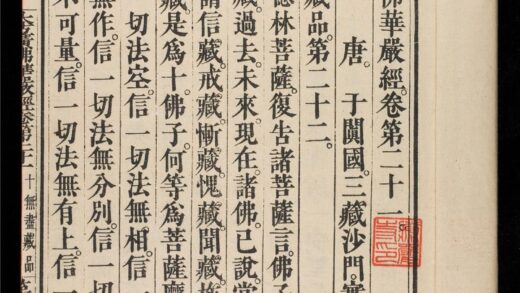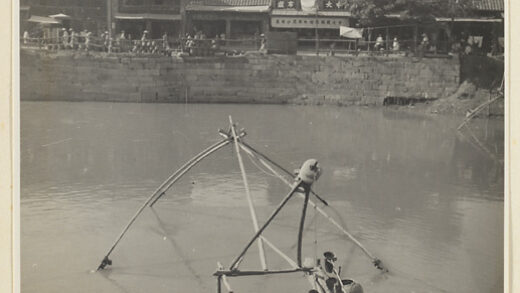【作品基本信息】
| 作者 | 苏轼 |
| 品名 | 书跋语 |
| 朝代 | 北宋 |
| 文件大小 | 17.99MB |
| 分辨率(DPI) | 300×300 |
| 像素大小 | 2831×2119 |
| 尺寸(CM) | 23.96×17.94 |
| 作品数量 | 1 |
| 作品收藏 | 台北故宫博物院 |
| 图片格式 | 默认提供TIF和JPG两个版本 |
基本数据
| 藏品类型 | 书法 |
| 品名 | 宋四家集册 册 宋苏轼书跋语 Colophon |
| 分类 | 法书 |
| 作者 | 苏轼 |
| 书体 | 行楷书 |
| 数量 | 一幅 |
| 作品语文 | 汉文 |
| 释文 | 故三司副使吏部陈公。轼不及见其人。然少时所识一时名卿胜士多推尊之。尔来前辈凋丧略尽。能称诵公者渐不复见。得其理言遗事。皆当记录宝藏。况其文章乎。公之孙师仲。录公之诗廿五篇以示。轼三复太息。以想见公之大略云。元丰四年(公元1081年)十一月廿二日眉阳苏轼书。 |
典藏尺寸
| 【位置】 | 【尺寸】(公分) |
| 本幅 | 27.8×60.6 |
质地
| 【质地位置】 | 【质地】 |
| 本幅 | 纸 |
印记数据【印记类别】【印记】收传印记韩氏之印鉴藏宝玺乾隆御览之宝鉴藏宝玺石渠宝笈鉴藏宝玺三希堂精鉴玺鉴藏宝玺宜子孙鉴藏宝玺重华宫鉴藏宝鉴藏宝玺乐善堂图书记鉴藏宝玺嘉庆御览之宝收传印记彭城陈氏子子孙孙永宝收传印记项元汴印收传印记天籁阁收传印记项子京家珍藏收传印记项墨林鉴赏章收传印记九如清玩收传印记也园珍赏
参考数据
| 【类别】 | 【参考数据】 |
| 收藏着录 | 石渠宝笈初编(重华宫),下册,页709 |
| 收藏着录 | 故宫书画录(卷三),第一册,页151 |
| 收藏着录 | 故宫历代法书全集,第十一册,页66-87、196-198 |
| 内容简介(中文) | 苏轼(1036-1101)字子瞻,号东坡,四川眉山人,是宋代一流的书法家、政治家与文学家。 苏轼学书曾师法王羲之、颜真卿、李邕、杨凝式,但他受颜真卿影响最深。此幅小字结构宽博雍容、运笔沉着稳健,笔划间有「牵丝」相连,富行书的意味。字形虽不甚俊美,但意韵丰富,正如他主张「我书意造本无法」,书家应当有法而不泥于法。本幅为「宋四家集册」之一。 |
| 内容简介(英文) | Su Shih was a native of Szechwan and is recognized as one of the premier calligraphers, politicians, and writers of the Sung dynasty. Su Shih studied the styles of Wang Hsi-chih, Yen Chen-ch’ing, Li Yung, and Yang Ning-shih, but the influence of that of Yen Chen-ch’ing was the greatest. Despite the small characters here, they are open and expansive with attractive and relaxed brushwork. Strokes as thin as silk link the brushwork together for a sense of running script. Thought the characters may not be very handsome, they are full of spirit. As he himself advocated, “My calligraphy knows no method,” which means that each calligrapher should develop, rather than stick to, a certain style, This is leaf one form Album of the Four Great Sung Masters. |
| 内容简介(中文) | 苏轼(1036-1101)字子瞻,号东坡,四川眉山人,是宋代一流的书法家、政治家与文学家。 苏轼学书曾师法王羲之、颜真卿、李邕、杨凝式,但他受颜真卿影响最深。此幅小字结构宽博雍容、运笔沉着稳健,笔划间有「牵丝」相连,富行书的意味。字形虽不甚俊美,但意韵丰富,正如他主张「我书意造本无法」,书家应当有法而不泥于法。本幅选自「宋四家集册」。(20100102) |
| 内容简介(英文) | Su Shi (sobriquet Dongpo), a native of Meishan, Sichuan, was a great calligrapher, statesman, and litterateur of the Song. Su studied the styles of such ancient masters as Wang Xizhi, Yan Zhenqing, Li Yong, and Yang Ningshi (but he was probably most influenced by Yan’s style). Despite the small characters here, they are broad and dignified in mature and steady brushwork. Brush traces as thin as silk connect strokes, giving the work a sense of running script. The characters may not be particularly handsome, but they are still full of spirit. Su himself once said, “My calligraphy knows no method,” meaning that one should not inflexibly stick to a certain style. This is a leaf from the album “Collection of the Four Song Masters.”(20100102) |
| 参考书目 | 1.〈跋语〉,收入何传馨、陈阶晋、何炎泉编,《故宫法书新编(九) 宋 苏轼墨迹(上)》(台北:国立故宫博物院,2011年九月初版一刷),页30-33。 |
【作品展示】





